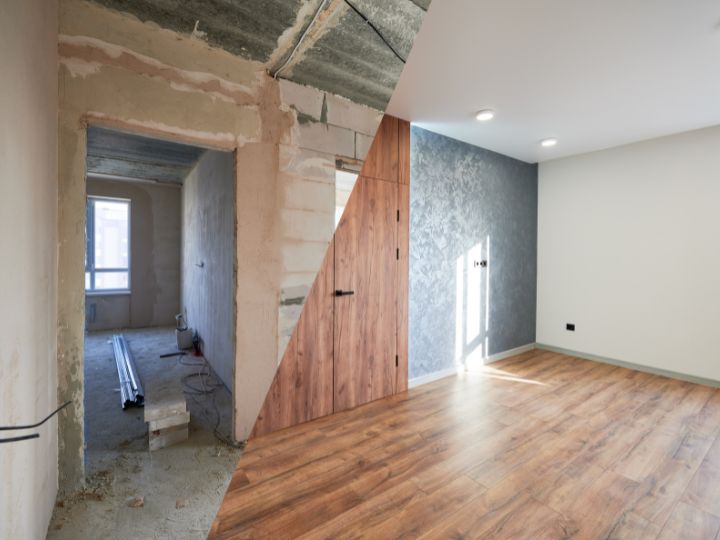
Eco-Friendly Bathroom Remodeling: A Comprehensive Guide

Embarking on an eco-friendly bathroom remodeling project can have a significant positive impact on both your home and the environment. By choosing sustainable materials, energy-efficient fixtures, and green practices, you can create a bathroom that is not only stylish and functional but also environmentally responsible. This comprehensive guide will walk you through essential tips and options for eco-friendly bathroom remodeling, helping you make informed decisions and achieve a sustainable renovation.
Key Elements of Eco-Friendly Bathroom Remodeling
1. Sustainable Materials
Selecting sustainable materials is one of the most effective ways to make your bathroom remodel eco-friendly. Here are some top choices:
- Recycled Glass Tiles: Made from post-consumer glass, these tiles offer a unique look while reducing waste. They are durable, easy to clean, and come in a variety of colors and styles.
- Bamboo: Bamboo is a highly renewable resource that grows quickly and can be used for flooring, cabinetry, and other finishes. It’s durable and available in various finishes.
- Reclaimed Wood: Reclaimed wood from old barns or other structures can add character and reduce the need for new lumber. It’s a great choice for cabinetry and accent pieces.
- Low-VOC Paints: Volatile Organic Compounds (VOCs) in traditional paints can negatively impact indoor air quality. Opt for low-VOC or zero-VOC paints to ensure a healthier environment.
2. Water-Efficient Fixtures
Upgrading to water-efficient fixtures can significantly reduce water consumption in your bathroom:
- Low-Flow Toilets: These toilets use less water per flush compared to traditional models, helping conserve water and lower utility bills.
- Water-Saving Showerheads: Install showerheads that use less water without sacrificing performance. Look for models that have a flow rate of 2.0 gallons per minute (GPM) or less.
- Faucet Aerators: Faucet aerators reduce water flow while maintaining pressure, making them a simple and effective way to save water in the bathroom.
3. Energy-Efficient Lighting
Choosing energy-efficient lighting options can reduce your bathroom’s energy consumption:
- LED Lights: LEDs use significantly less energy than traditional incandescent bulbs and have a longer lifespan. They produce less heat, which can help reduce cooling costs.
- Compact Fluorescent Lights (CFLs): CFLs are another energy-efficient option that consumes less energy and lasts longer than incandescent bulbs.
4. Green Flooring Options
When selecting flooring for your bathroom remodel, consider eco-friendly options:
- Cork Flooring: Cork is a renewable resource that is both comfortable underfoot and resistant to mold and mildew. It’s a great choice for bathrooms.
- Recycled Rubber Flooring: Made from recycled tires, this flooring option is durable, slip-resistant, and available in various styles and colors.
- Natural Stone: While natural stone is a non-renewable resource, choosing stone that is responsibly sourced and has a long lifespan can be a sustainable choice.
5. Efficient Heating and Cooling
Incorporate energy-efficient heating and cooling solutions to make your bathroom more eco-friendly:
- Radiant Floor Heating: This system provides even heat distribution and can be more energy-efficient than traditional heating methods. It’s particularly effective in bathrooms where floor heating can enhance comfort.
- Ventilation Fans: Install energy-efficient ventilation fans to help reduce moisture and improve air quality. Look for fans with a high CFM (cubic feet per minute) rating and low energy consumption.
Cost Breakdown of Eco-Friendly Bathroom Remodeling Components
1. Sustainable Materials
Recycled Glass Tiles: $15 - $30 per sq. ft.
Bamboo Flooring: $5 - $10 per sq. ft.
Reclaimed Wood: $10 - $25 per sq. ft.
Low-VOC Paints: $30 - $60 per gallon
2. Water-Efficient Fixtures
Low-Flow Toilets: $150 - $500
Water-Saving Showerheads: $20 - $100
Faucet Aerators: $10 - $30
3. Energy-Efficient Lighting
LED Lights: $10 - $50 per bulb
CFLs: $5 - $20 per bulb
4. Green Flooring Options
Cork Flooring: $6 - $12 per sq. ft.
Recycled Rubber Flooring: $8 - $15 per sq. ft.
Natural Stone: $10 - $25 per sq. ft.
5. Efficient Heating and Cooling
Radiant Floor Heating: $10 - $20 per sq. ft.
Ventilation Fans: $100 - $300

Benefits of Eco-Friendly Bathroom Remodeling
1. Environmental Impact
By choosing eco-friendly materials and fixtures, you contribute to environmental conservation. Reducing water and energy consumption helps lower your carbon footprint and decreases the strain on natural resources.
2. Cost Savings
Energy-efficient fixtures and water-saving appliances can lead to significant savings on utility bills. Investing in high-quality, durable materials can also reduce the need for frequent replacements.
3. Healthier Indoor Environment
Low-VOC paints and eco-friendly materials contribute to better indoor air quality, creating a healthier environment for you and your family.
4. Increased Home Value
Eco-friendly upgrades can enhance your home’s value and appeal to environmentally conscious buyers. Green features often translate to higher resale values and a competitive edge in the housing market.
Tips for Successful Eco-Friendly Bathroom Remodeling
1. Plan Carefully
Start with a detailed plan and budget to ensure that your eco-friendly choices align with your overall renovation goals. Consider consulting with a green remodeling expert to help guide your decisions.
2. Research and Compare
Research different products and compare their environmental benefits and costs. Look for certifications such as Energy Star or Forest Stewardship Council (FSC) to ensure the products you choose meet sustainability standards.
3. Prioritize Upgrades
Focus on the most impactful upgrades that align with your budget. Even small changes, such as installing a low-flow toilet or LED lights, can make a significant difference.
4. Seek Professional Advice
Work with contractors and designers experienced in eco-friendly remodeling to ensure that your project meets both your sustainability goals and design preferences.
5. Reuse and Recycle
Whenever possible, reuse existing materials and recycle old fixtures or materials. This not only reduces waste but can also lower renovation costs.
Conclusion
Eco-friendly bathroom remodeling is a rewarding way to enhance the sustainability of your home while creating a stylish and functional space. By selecting sustainable materials, water-efficient fixtures, and energy-saving options, you can achieve a bathroom remodel that benefits both the environment and your household. Careful planning, research, and professional guidance will help you make informed choices and create a green bathroom that you’ll enjoy for years to come.
For personalized advice on eco-friendly bathroom remodeling and to explore sustainable options for your renovation, contact us today. Let’s work together to make your bathroom both beautiful and environmentally responsible.
Latest Blogs
Transform your dream home into reality with our premier renovation services!
Book a call with us today and let's create the perfect space tailored just for you.

.svg)
.svg)



